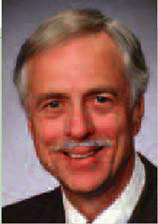Studies suggest that child-sized masks work well, although custom masks are needed for children with craniofacial deformities. To determine which pressure works for a patients means having to do a CPAP titration.
A significant issue with CPAP is getting kids enthused about it and getting parents onboard. With good compliance, CPAP in kids is reportedly 86% effective.
CPAP is effective, it’s safe. You need extensive parental involvement. And it’s a reasonable alternative in difficult patients, Dr. Houck said.
Oral Appliances for OSA Children
For OSA due to orofacial causes, oral appliances may be useful, said David H. Darrow, MD, DDS, from the departments of otolaryngology and pediatrics at Eastern Virginia Medical School.
The two main groups of candidates for oral appliance therapy are long face and small jaw patients. Those with a long face have a long, lower anterior face, a steep mandibular plane, high arched palate, or narrow maxilla. A small jaw patient has a retruded mandible or short ramus.
Oral appliances are designed to increase the space available for respiration, whether it’s trying to affect the nose or trying to affect the oral cavity or pharynx, he said.
There are three main types of devices. One type is the maxillary expander, which increases the transverse dimension of the patale and expands the intranasal space. Studies show that these devices improve nasal resistance, as well as tongue position. Maxillary expanders need to be anchored to the first permanent molars.
The second group include mandibular repositioners and tongue retention devices, which are designed to position the tongue more anteriorly. Mandibular advancement devices are appliances that move the jaw forward and bring the tongue along with them passively. The idea is to increase the anteroposterior diameter of retroglossal space, Dr. Darrow said.
Children should be selected for mandibular repositioning carefully, Dr. Darrow said. Some tolerate the device poorly. Also, children with severe obstruction get only a small improvement in OSA. If they’re severely obstructed you should probably be looking at other solutions, he said.
Tongue retention devices use a suction bulb to hold the tongue forward, but are too uncomfortable for children.
The third type of device is the palatal lift device, designed to elevate the soft palate away from the tongue base. These devices are not very effective for OSA.
Data from a recent Cochrane Review suggest that CPAP is often more effective than oral devices. The problem is that CPAP is often poorly tolerated, so oral devices should be considered sort of a backup device for patients who may not tolerate CPAP, Dr. Darrow said.

Leave a Reply